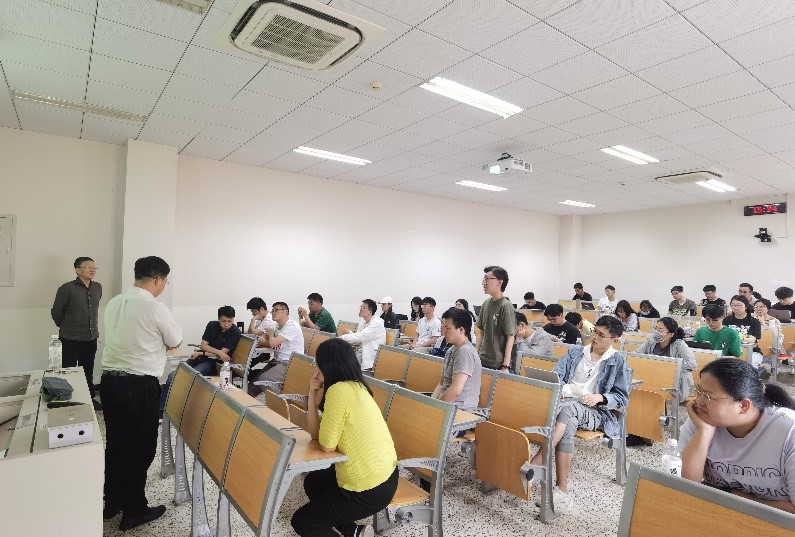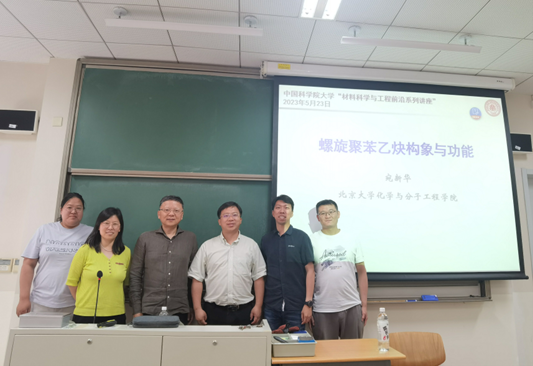At 14:00 on May 23, 2023, Professor Wan Xinhua from Peking University was invited by Professor Huang Hui to give a lecture on "Conformation and Function of spiral polyphenylene" in the University of Chinese Academy of Sciences. The lecture was held in Room 114 on the first floor of the Teaching Hall.
The introduction of chirality provides more controllable variables for the structural design of polymers. Helical structure is an important chiral structure. Optically active helical polymer has a wide range of practical and potential applications in chiral recognition, enantioselective separation asymmetric catalysis, circular polarization fluorescence, information storage and multi-channel sensing, and is becoming an important research direction in the field of functional materials.
In the lecture, Professor Wan Xinhua first introduced the use of strong hydrogen bonds between molecular lactam bonds to obtain the main chain luminous monosubstituted polyacetylene, and studied the influence of various internal and external factors on the fluorescence properties. The reversible switching of fluorescence and CPL is realized by using the solvent and temperature responsiveness of hydrogen bond, making it applicable in CPL detector. A newly developed self-display active ester-amine reaction is introduced, which can be used to quantitatively monitor the reaction process in real time with visible fluorescence changes. It can be used to identify various chiral organic amines with different structures. It shows enantioselectivity to various chiral amines, and can provide multi-channel visual quantitative detection. Then Professor Wan explained to the students a new class of amphiphilic polyphenylacetylene homopolymer, which can self-assemble into regular hexagonal nanosheets in solution, and show the chiral transfer process on a two-dimensional scale. The growth process shows the characteristics of "first nucleation and then growth", and the rigid helical polymer molecules inside are arranged in hexagonal columns. Based on the difference of the conformation of polystyrene fast helical, the "self-resolution" driven by helical conformation was realized. The circularly polarized fluorescence intensity of polyphenylene was significantly enhanced under the hexagonal lattice confinement. In the end, Professor Wan Xinhua had a discussion with the teachers and students on site and received warm responses from them.




Wang Xinhua, Professor, Doctoral Supervisor, Director of the Key Laboratory of Polymer Chemistry and Physics, Ministry of Education, Peking University. In 1997, it was awarded the third prize of National Natural Science (ranking 2), in 1998, it was awarded the special government allowance of The State Council, in 2003, it was supported by the National Outstanding Youth Foundation, and in 2004, it was selected as the first batch of national candidates for the New Century Hundred Million Talents Project. In 2010, he was appointed as the Special Professor of Changjiang Scholars of the Ministry of Education. In 2018, he won the second prize of Natural Science of the Ministry of Education. Research interests and fields: polymer synthesis and advanced functional materials. He has published more than 200 SCI indexed papers and written chapters of 6 English books.


